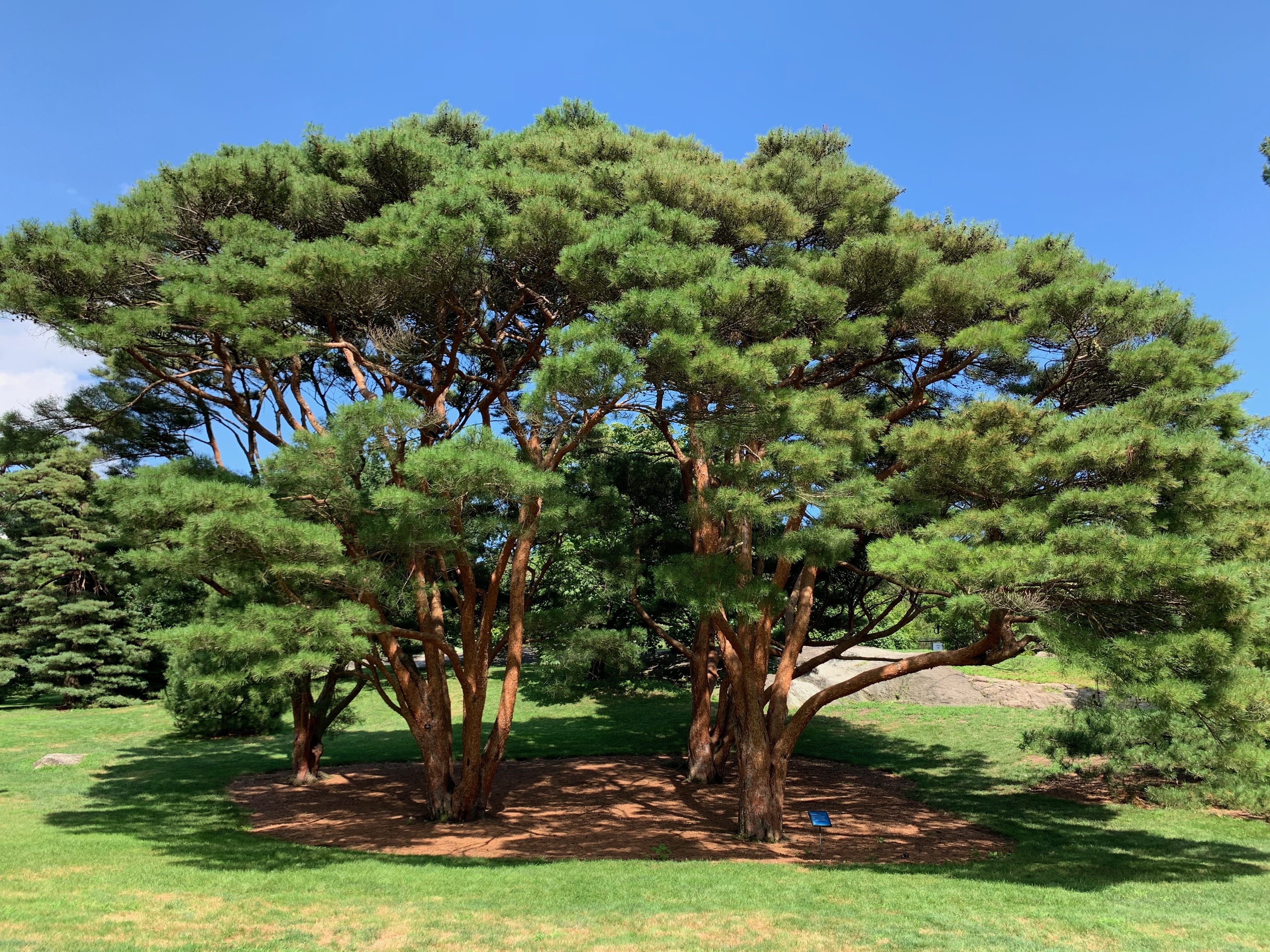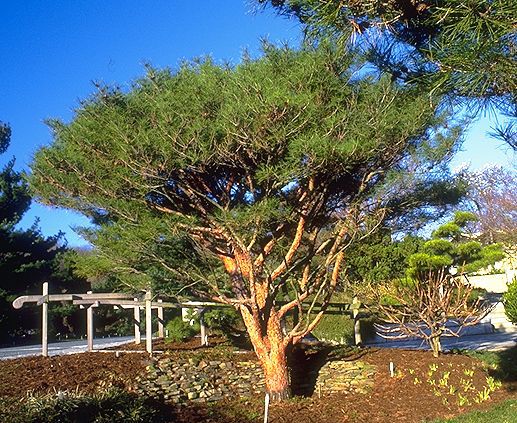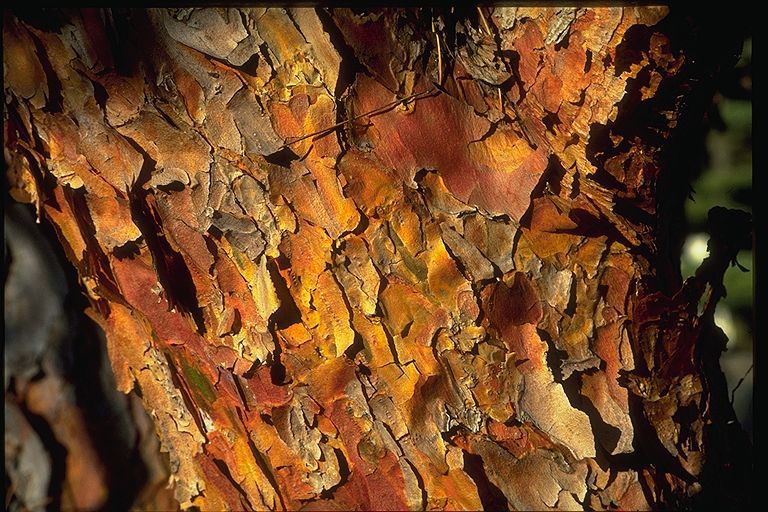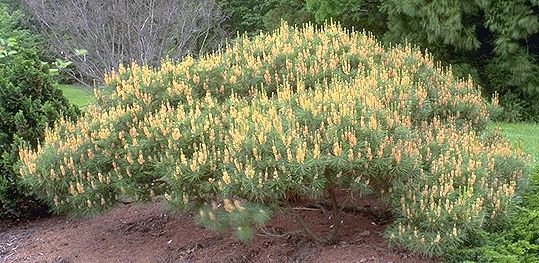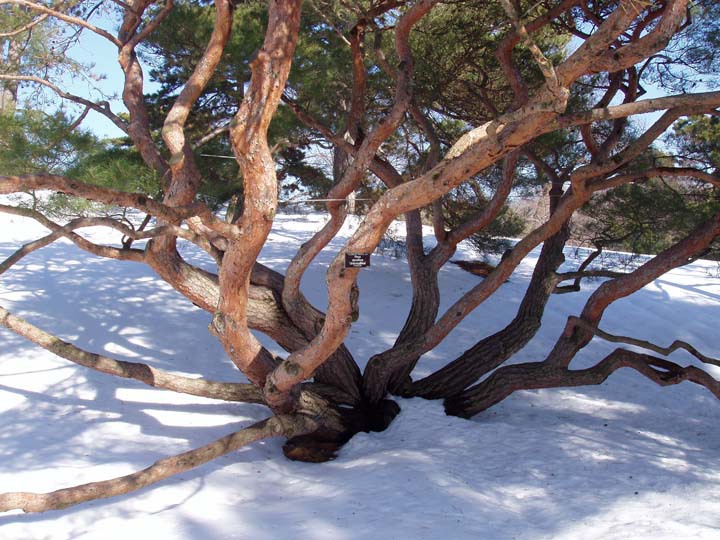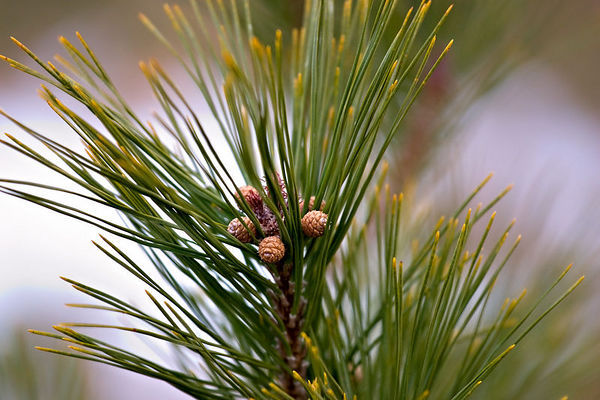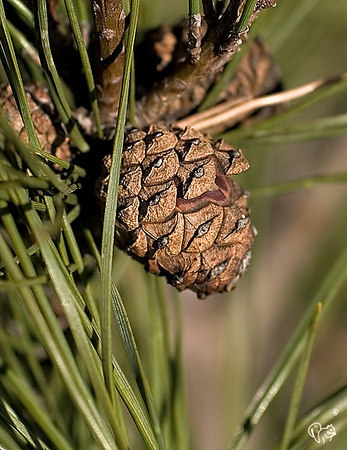Pinus densiflora 'Umbraculifera' is a slow-growing, multi-stemmed, shrubby, vase-shaped selection of Japanese red pine with long, dark-green needles; a heavy show of tiny seed cones; and a flattish parasol-like top. Once established, a specimen will have branches that divide from the base. Older bark exfoliates, exposing patterns with various shades of reddish brown. This plant grows best in full sun and well-drained soil. To maintain tidy form and dense structure, copious spring candling in the spring and aesthetic pruning throughout the year is required. The result can be brilliant. Tanyosho pines are classic choices for formal and Japanese gardens.
After 10 years of growth, a mature specimen will measure 6 feet (2 m) tall and and 4.5 feet (1.5 m) wide, an annual rate of growth of 6 to 8 inches (15 - 20 cm). Of course when employing candling techniques, these numbers are basically meaningless.
This is a very old cultivar that originated in Japan centuries ago. It was first recorded into botanical literature in 1890 by German author and botanist, Heinrich Mayr. It must be emphasized that 'Umbraculifera' is the accepted cultivar name for this plant. It is often seen listed as P. densiflora 'Tanyosho' or 'Tagyoushou' which are acceptable common names, but nothing more.
